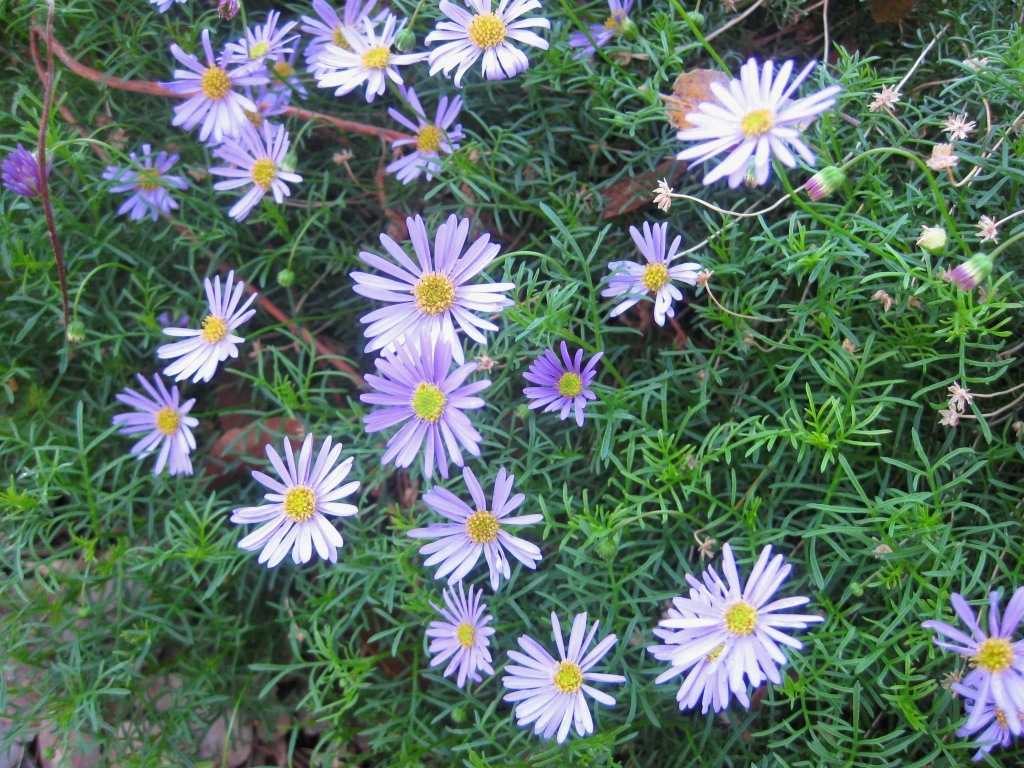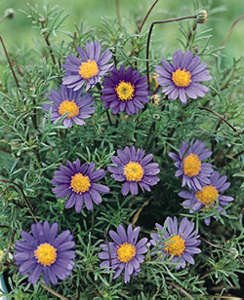Brachyscome iberidifolia
Blue Daisy ( Brachyscome iberidifolia )
The Blue Daisy ( Brachyscome iberidifolia ), also called Australian daisy, is a perennial plant of the genus Blue Daisies ( Brachyscome ) and belongs to the sunflower family ( Asteraceae). The Blue Daisies is from Australia and was further developed in the late 1980s in Germany to a new ornamental plant. This is now one of the world's most popular bedding and balcony plants. DC is often the perennial species Brachyscome multifida DC. Called Blue Daisy.
Name
The German name " Blue Daisy " is due to the great similarity with the daisy (Bellis perennis). The botanical genus name is also used in the incorrect form Brachycome (after the first description by Cassini ). A request for a formal assessment of the genus name on this form of writing, but was rejected in 1993 and maintained Brachyscome as a valid genus name.
Description
This species is an annual herbaceous plant, the plant height from 5 to 45 cm achieved when used as an ornamental plant in the natural habitat and in Central Europe. The Blue Daisy remains relatively compact and has a bushy habit. The leaves are finely pinnate.
The individual flowers are here, as is typical for the subfamily of herbaceous than marginal ray florets and disc florets inside before. The total of both types of flowers forming inflorescences with a diameter up to 2.5 cm. The so-called basket is called due to the great similarity of the inflorescence with a single flower as Pseudanthium ( sham prosperity ). The inflorescences give off an aromatic scent.
The flowers are typically fünfzählig. The cup is completely reduced, and there is at the individual flowers neither a pappus still a chaff sheet. In the blue - violet colored ray florets the fused petals expire in five Kronblattzipfel. The tubular flowers are yellow and also fünfzipflig. The anthers of the five stamens are fused to the Androeceums typical of the daisy family anther tube, the filaments are free. Within the anther tube the stylus is with the two-piece scar. The gynoecium consists of two fused carpels and permanent. The fruit is an achene.
Dissemination
The wild form of the Blue Daisy comes from Australia. There it is found mainly in the states of Northern Territory, South Australia and Western Australia. It grows best in sandy and acidic soils.
Use as an ornamental plant
Seeds of the wild form of Brachyscome iberidifolia was collected in the 1980s, specifically in Australia. At the Geisenheim Research Institute, whose mission testing various Australian wild plants was at this time among others as potential ornamental plants whose suitability has been tested as a flowering bedding, balcony and hanging plant. After successful approaches the now as " Blue Daisy " designated plant was bred commercially. To date, a variety of protected varieties have emerged, (, various blue and violet tones to whitish pink ) vary in stature and in particular flower color.
The Blue Daisies is considered uncomplicated ornamental plant that blooms continuously from May / June until the first frosts.
Varieties (selection): 'Fragrant Fancy '









